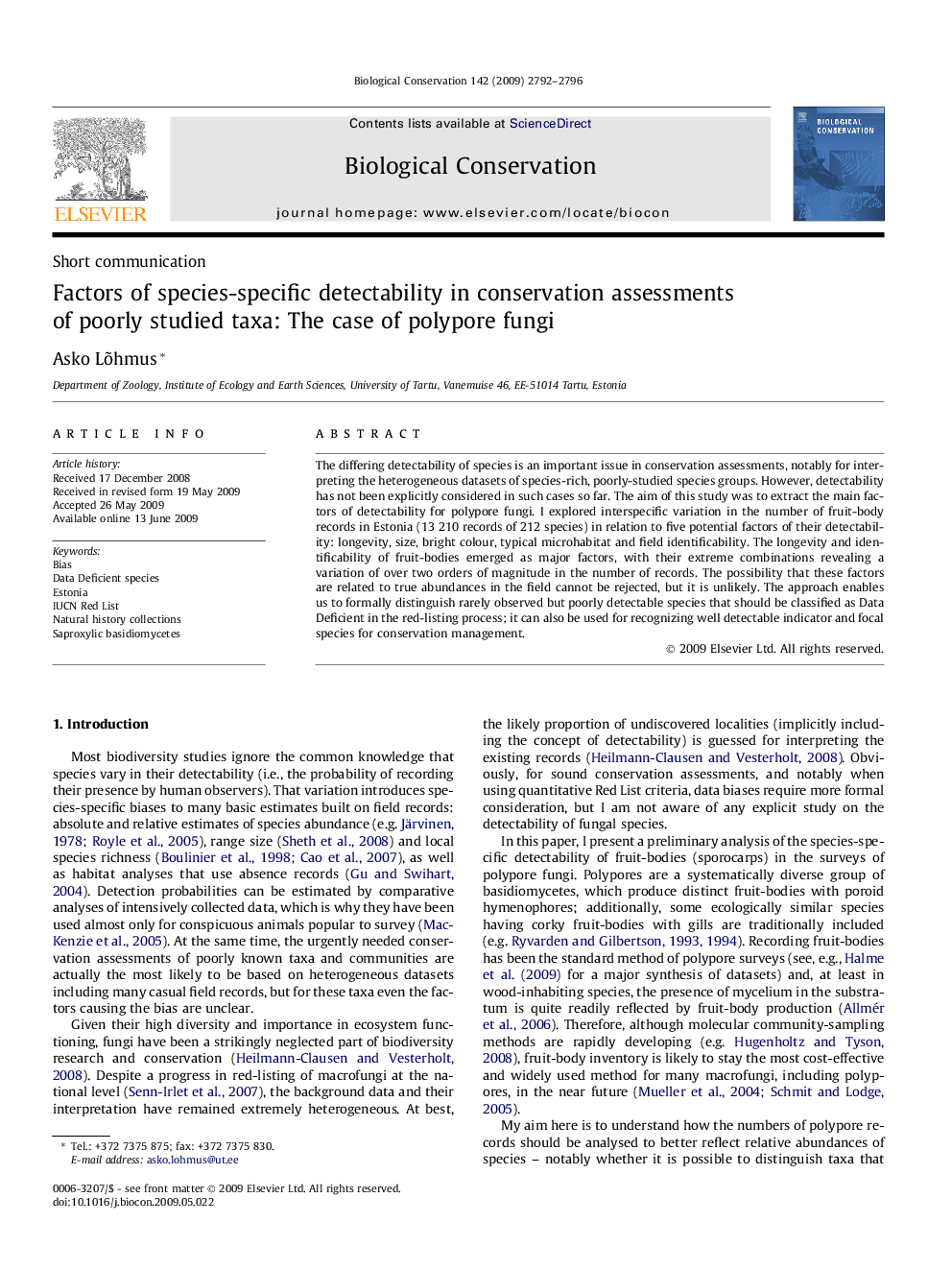| Article ID | Journal | Published Year | Pages | File Type |
|---|---|---|---|---|
| 4385883 | Biological Conservation | 2009 | 5 Pages |
Abstract
The differing detectability of species is an important issue in conservation assessments, notably for interpreting the heterogeneous datasets of species-rich, poorly-studied species groups. However, detectability has not been explicitly considered in such cases so far. The aim of this study was to extract the main factors of detectability for polypore fungi. I explored interspecific variation in the number of fruit-body records in Estonia (13 210 records of 212 species) in relation to five potential factors of their detectability: longevity, size, bright colour, typical microhabitat and field identificability. The longevity and identificability of fruit-bodies emerged as major factors, with their extreme combinations revealing a variation of over two orders of magnitude in the number of records. The possibility that these factors are related to true abundances in the field cannot be rejected, but it is unlikely. The approach enables us to formally distinguish rarely observed but poorly detectable species that should be classified as Data Deficient in the red-listing process; it can also be used for recognizing well detectable indicator and focal species for conservation management.
Related Topics
Life Sciences
Agricultural and Biological Sciences
Ecology, Evolution, Behavior and Systematics
Authors
Asko Lõhmus,
